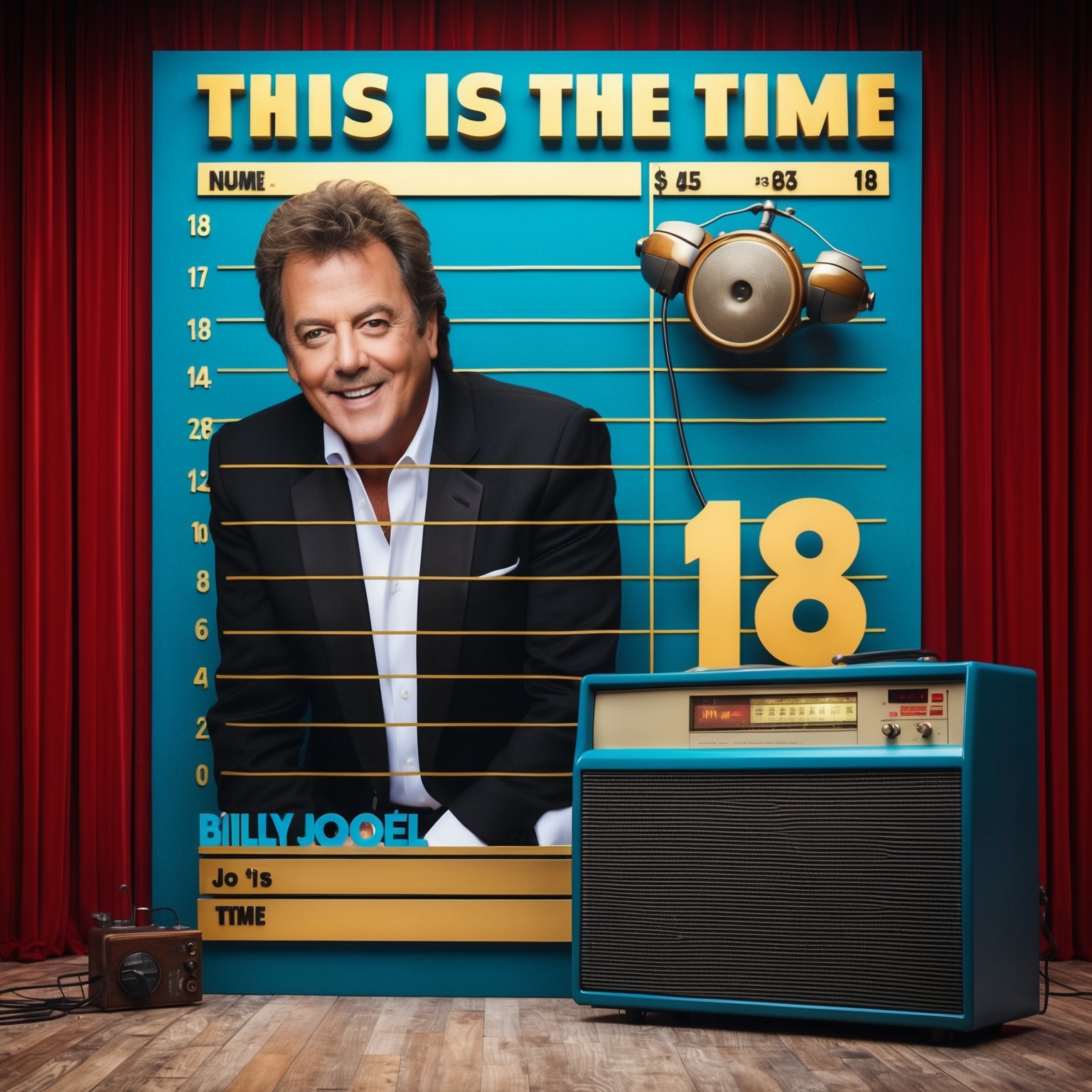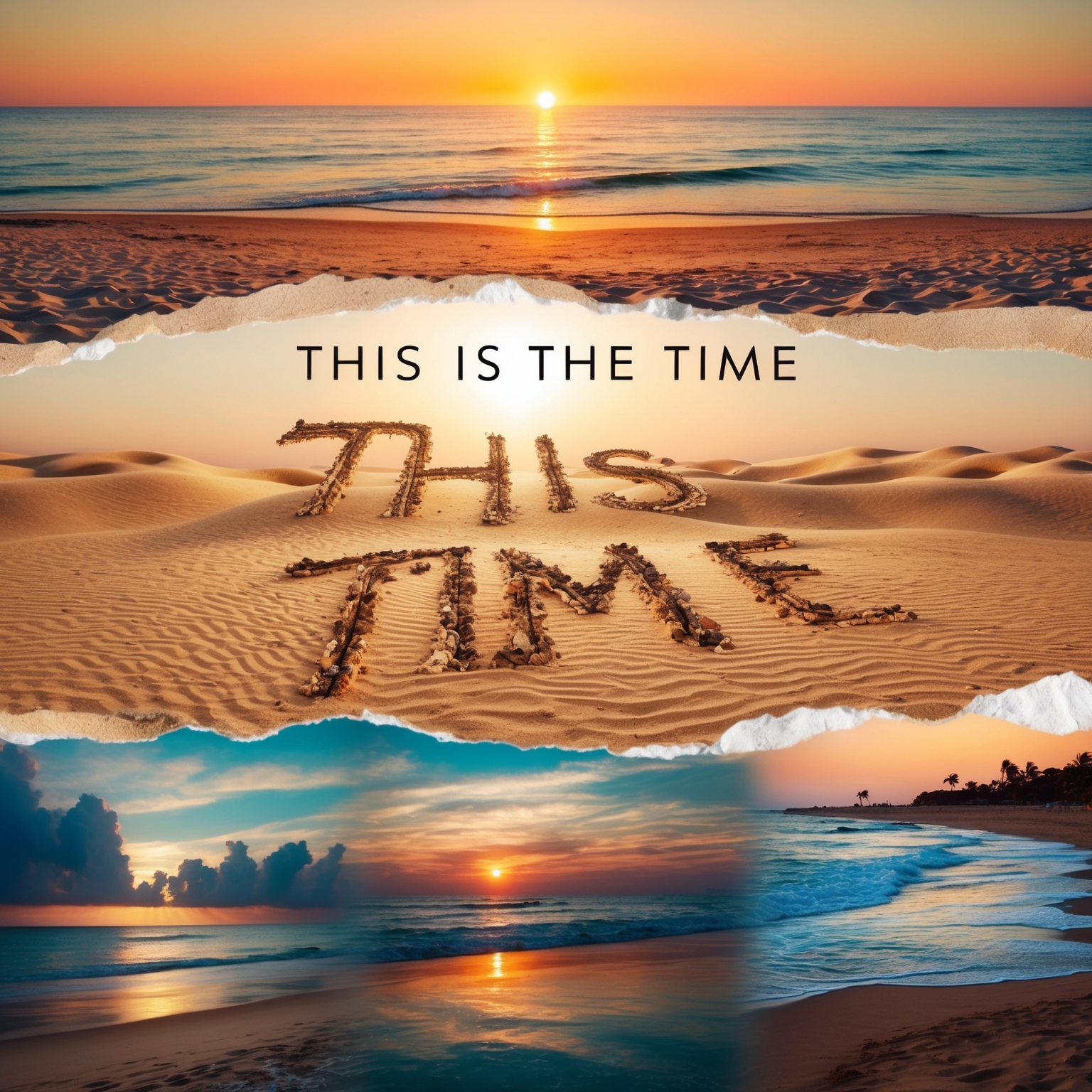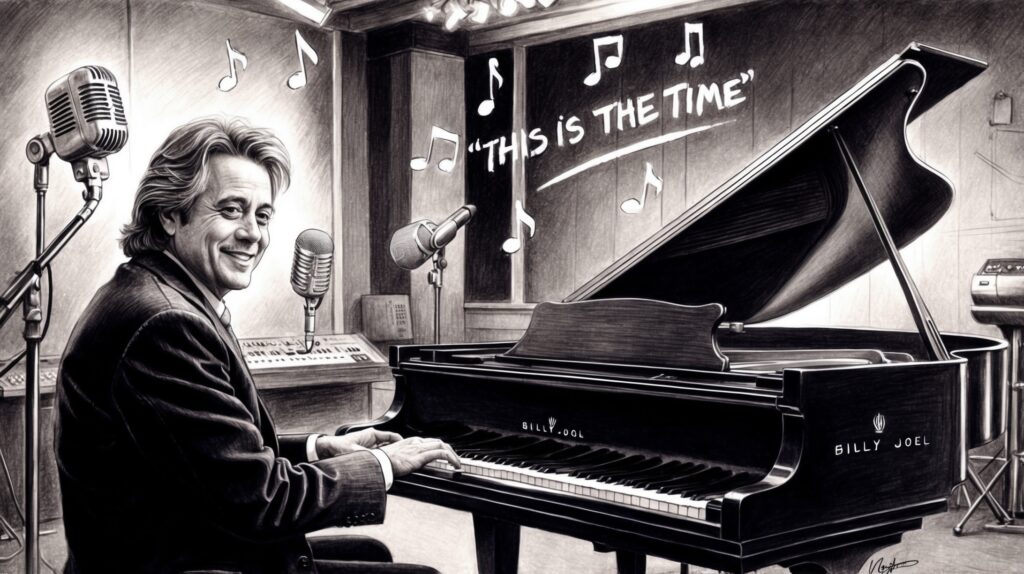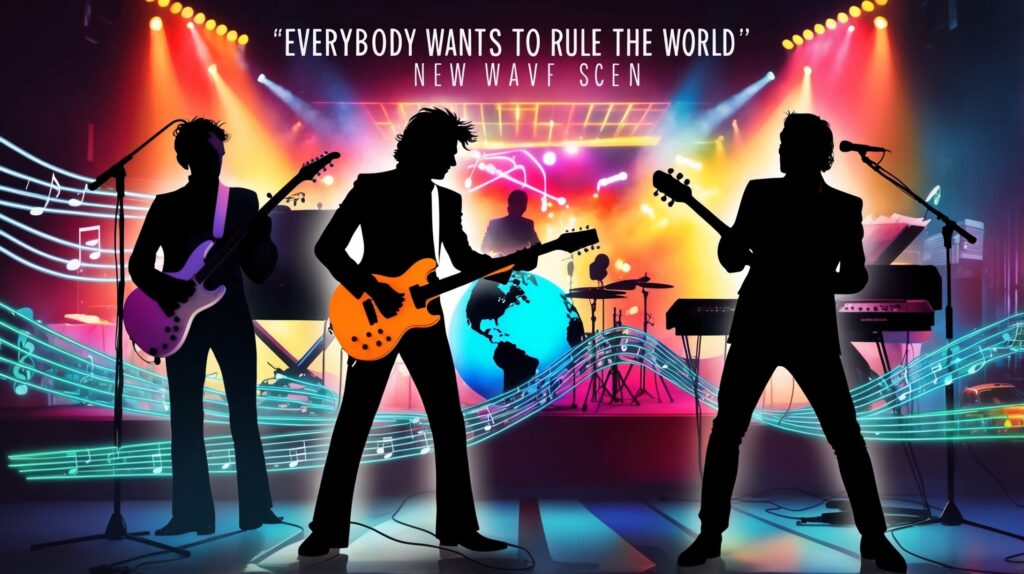Billy Joel | This Is the Time
Billy Joel: The Piano Man’s Timeless Touch on ‘This Is the Time’
Explore Billy Joel’s artistic journey and the significance of ‘This Is the Time’ within his career. Discover his early influences, major achievements, and how he navigated the music scene of the 1980s to create timeless pieces.

Billy Joel, fondly known as ‘The Piano Man,’ emerged as a pivotal figure in the world of music with an array of songs that resonate with a diverse range of emotions and stories. When discussing ‘This Is the Time,’ it’s essential to delve into its significance within Billy Joel’s illustrious career. Released in the mid-1980s, a period marked by Joel’s robust exploration of themes like nostalgia and reflection, the song captures the essence of cherishing moments, a concept that Joel frequently visited in his music.
Born in the Bronx, New York, Billy Joel’s early journey into music was influenced by his parents’ deep love for the art form. This foundation laid the groundwork for his rise to fame, which began earnestly with the release of ‘Piano Man’ in 1973. Over time, Joel became known for his vivid storytelling and melodic mastery, punctuated by a voice that conveyed both tenderness and strength. As he evolved, his compositions, including ‘This Is the Time,’ continued to showcase his ability to blend introspective lyrics with complex, yet catchy, musical arrangements.
In the era surrounding the release of ‘This Is the Time,’ Billy Joel was an established artist actively collaborating with renowned musicians and producers. This era saw Joel navigating a music scene that embraced pop-rock sounds, textured with synths and rich harmonies. Yet, Joel maintained a unique identity by incorporating classical influences and heartfelt lyrical themes. The song itself, a part of the ‘The Bridge’ album, saw him embracing collaboration more openly, a testament to his comfort and confidence as an artist who could both innovate and remain true to his roots.
Billy Joel: The Maestro Behind ‘This Is the Time’
Explore the genius of Billy Joel as the composer of ‘This Is the Time,’ delving into his background, musical style, influences, and how his composition has contributed to the song’s lasting legacy.

Billy Joel, the composer of ‘This Is the Time,’ is one of the most iconic and influential musicians in the history of popular music. Born in the Bronx, New York, in 1949, Joel showed a keen interest in music from a young age, partly due to his father, a classical pianist. His early musical pursuits involved playing in piano bars to support his family, which honed his skills and shaped his musical aesthetics. Over the years, Joel’s career skyrocketed, earning him the nickname ‘The Piano Man’ and numerous accolades for his songwriting and performance prowess.
Known for his versatility, Billy Joel effortlessly blends elements of pop, rock, jazz, and classical music, creating a distinct sound that appeals to a wide range of listeners. His influences include classical composers such as Beethoven and pop legends like The Beatles, which are often reflected in the richness of his melodies and the sophistication of his lyrical themes. Joel’s ability to merge these influences with stories from everyday life is a testament to his genius as a composer.
In ‘This Is the Time,’ Joel’s role was not just limited to melody creation; he skillfully intertwined music and lyrics to evoke a sense of nostalgia and reflection. The song features Joel’s signature piano-driven composition, highlighting his knack for crafting emotionally resonant music. The structure of the song, with its introspective verses and a powerful chorus, showcases Joel’s masterful songwriting, undoubtedly contributing to the track’s enduring appeal. His empathetic approach to songwriting allows listeners to delve into a powerful musical experience, rendering ‘This Is the Time’ a celebrated piece in his illustrious catalog.
Celebrating ‘This Is the Time’: Awards, Covers, and Pop Culture Appearances
This Is the Time’ may not have directly snagged major awards, but the song’s lasting impact is felt through covers and pop culture inclusions, underlining its timeless appeal.

Awards and Recognitions
The song ‘This Is the Time’ by Billy Joel, though not awarded in its own right, emerged as a significant track in the music world during its release in the mid-1980s. While it didn’t earn standalone awards, the song contributed to the success and popularity of the album ‘The Bridge,’ which was recognized for its blend of genres and Joel’s adept craftsmanship. The overall impact of the album enhanced Joel’s reputation as a versatile and influential artist of his time.
Notable Covers and Interpretations
Interestingly, ‘This Is the Time’ has inspired several artists who appreciate its nostalgic and romantic undertones, leading to notable covers over the years. While no single cover achieved standalone fame, artists have interpreted it in various ways, each adding a unique flavor to Joel’s original. These covers have served to introduce the song to new audiences and keep its spirit alive in contemporary music discussions.
Presence in Pop Culture
Beyond its presence in the album, ‘This Is the Time’ has been featured in various film and television soundtracks, highlighting its timeless and universal appeal. It has notably appeared in episodes of popular television shows and movie scenes where nostalgic and heartfelt emotions are called for, cementing its place in the annals of pop culture as a go-to track for evocative storytelling.
Climbing the Charts: A Snapshot of Success
Explore the chart success of Billy Joel’s “This Is the Time,” a song that stood strong in the Billboard charts, demonstrating Joel’s enduring appeal. Learn about its marketing strategies and its place in the artist’s career.

The song “This Is the Time” was released as a single in 1986, nestled within Billy Joel’s acclaimed album, “The Bridge.” Despite being one of the deeper tracks in the album, it managed to carve a niche for itself on the charts. Upon release, the song peaked at number 18 on the Billboard Hot 100, marking another successful addition to Joel’s illustrious discography. While it did not reach the top 10, its steady performance highlighted Joel’s consistent appeal during the mid-1980s, a period rich with musical experimentation for the artist.
When compared to other tracks of its time, “This Is the Time” stood out for its introspective lyrics and timeless melody. During this era, Joel was known for creating music that straddled the line between rock and pop, a blend that resonated well with audiences. The song’s nostalgic and reflective nature perhaps influenced its moderate yet enduring popularity, as listeners connected deeply with Joel’s themes of change and reflection.
Marketing strategies for “This Is the Time” played a significant role in its chart journey. While not promoted with as strong a push as some of his other hits, the song benefited from Joel’s reputation and the momentum of his previous successes. As Joel had already established himself as a household name by this point, much of the song’s marketing leaned on his existing fanbase and the critical acclaim of “The Bridge” album. Despite not having groundbreaking promotional campaigns, the song’s quality and Joel’s secure position in the music industry helped maintain its presence on the charts.
Exploring the Visual World of ‘This Is the Time’
Discover how fan-made videos and live performances influence the legacy of ‘This Is the Time’ by Billy Joel.

Delve into the Video Landscape
Although ‘This Is the Time’ by Billy Joel does not have an official music video, the song’s legacy lives on through various fan-created videos and live performance recordings. The fans have creatively set the melodic ballad against visuals capturing a sense of nostalgia and introspection, resonating deeply with the song’s evocative lyrics. These videos often incorporate a montage of romantic and evocative scenes, drawing parallels with the themes presented in the song.
Contribution to Popularity
While the absence of an official music video might seem like a hurdle for modern listeners, Billy Joel’s ‘This Is the Time’ has thrived through other avenues. The powerful performances in live concerts and the use of the song in television shows have helped cement its popularity. The rich emotional weight of the song allows fans to make their own interpretations, leading to a variety of unique visual representations that circulate online. These interpretations often feature nostalgic footage from the 1980s, intertwining personal narratives with the universal themes of love and time.
Reception and Impact
The reception of these fan-made videos aligns with the song’s thematic intent to capture moments of introspection. Each visual reiteration adds a new layer to the song’s legacy, showcasing its continued impact and relevance in popular culture. Fans are drawn to the meaningful reflection embedded in Joel’s lyrics, often commending these videos for breathing new life into an already timeless classic. This interaction highlights the power of the song, not solely based on visuals but on its ability to inspire creative expressions that resonate worldwide.
Dissecting the Musical Fabric of ‘This Is the Time’
Explore the rich musical structure of Billy Joel’s ‘This Is the Time,’ its key, tempo, and instrumental arrangements that highlight Joel’s artistic evolution in the 1980s.

Billy Joel’s ‘This Is the Time’ is a compelling testament to his signature pop-rock style, unfolding with a resplendent melody and intricately woven musical structure. The song, written in the key of E major, showcases Joel’s sophisticated understanding of melody and harmony. E major is known for its bright and victorious tones, lending itself perfectly to the hopeful and reflective themes of the song. The chord progression utilized in the verses and chorus complements Joel’s poignant lyrics, striking a balance between nostalgia and warmth.
The tempo of the song, clocking in at around 76 beats per minute, creates a leisurely yet deliberate pace, allowing listeners to savor every lyrical moment. This moderate tempo is characteristic of Joel’s mid-80s work, providing a canvas for themes of reminiscence and time fleeting by. The instrumental arrangement enriches the song’s timeless appeal, predominantly featuring piano—a staple in Joel’s sonic library—underpinned by layers of gentle guitar strumming and subtle drumming that accentuates rather than overwhelms the narrative.
This track shines a spotlight on Joel’s maturation as an artist during the 1980s. Compared to his earlier works from the ’70s like ‘Piano Man’ or ‘The Stranger,’ ‘This Is the Time’ reflects a polished, introspective approach. It connects seamlessly with its peers on the ‘The Bridge’ album, indicating a period where Joel was exploring deeper, more contemplative themes. The rhythm section, warm bass lines, and occasional saxophone are reminiscent of his classic style, yet distinctly present a more laid-back, considered atmosphere.
An interesting fact about the recording process includes the involvement of producer Phil Ramone, who had consistently worked with Joel, helping craft hits that featured innovative production techniques. The album was primarily recorded in The Power Station in New York, a studio notable for its state-of-the-art technology and intimate ambiance, which played a crucial role in shaping the mood of the track.
A Reflective Journey Through Time
Billy Joel’s “This Is the Time” invites listeners on a reflective journey, urging us to cherish fleeting moments. The song’s poignant themes of time and transformation, delivered through a first-person narrative, enhance its emotional impact and universality.
They’re tearing it down now, but it’s just as well
I haven’t shown you everything a man can do
So stay with me baby, I’ve got plans for youThis is the time to remember
‘Cause it will not last forever
These are the days to hold on to
‘Cause we won’t, although we’ll want to
This is the time
But time is gonna change
You’ve given me the best of you
And now I need the rest of you
Did you know that before you came into my life
…
******* This Lyrics is NOT for Commercial use *******
 The lyrics of “This Is the Time” by Billy Joel offer a heartfelt reflection on moments of significance and the inevitable passage of time.
The lyrics of “This Is the Time” by Billy Joel offer a heartfelt reflection on moments of significance and the inevitable passage of time.
Lyrical Themes and Messages: The central theme of the song revolves around cherishing the present moments as they are transient. The lyrics invite listeners to embrace the here and now, as it will not last indefinitely. Joel reminds us that, while change is inevitable, it is worth celebrating the times that truly define our lives. This message resonates deeply with audiences who understand the fleeting nature of life and relationships.
Narrative and Storytelling: The storytelling in “This Is the Time” is delivered from a first-person perspective, which adds intimacy and personal connection to the narrative. The initial imagery of walking on a beach by an old hotel, now subject to demolition, sets the tone for nostalgia and transformation. This narrative approach allows listeners to engage personally, as if they are being spoken to directly by Joel, enhancing the song’s emotional impact.
Use of Literary Devices: Billy Joel employs various literary devices to enrich the lyrical quality of the song. Metaphors such as “You’ve given me the best of you, and now I need the rest of you” express deep emotions and complex relational dynamics succinctly. The use of contrast between permanence and change, past and future, is cleverly highlighted through these metaphors.
Emotional Impact and Relatability: The emotional weight of the song lies in its relatability. Listeners are likely to reflect on their own relationships and memorable experiences, making the lyrics both personal and universal. Joel’s exploration of time’s passage coupled with the imperative to savor each moment strikes a chord, fostering a deep emotional connection.
Cultural and Social References: The song subtly captures the social milieu of the mid-1980s, a period marked by significant economic and technological shifts. The ephemeral nature of favorite places and memories is evocative of real-life scenarios faced by many, enhancing its relatability across different audiences.
Fan Theories and Interpretations: Over time, fans have offered varied interpretations of the lyrics, often linking them to pivotal moments in their own lives. Some see the lyrics as a nod to Joel’s own reflections on his career and personal relationships, while others perceive them as a broader commentary on life’s impermanence.
🎹 Did you know? Billy Joel’s This Is the Time captures 80s nostalgia perfectly, peaking at #18 on Billboard! Relive the magic! 🎶✨ #BillyJoel #ThrowbackThursday #80sMusic tinyurl.com/343bbczj
Click to Tweet







